
Journal of Food and Nutrition Research
Scope & Guideline
Unveiling the Future of Food and Dietary Health
Introduction
Aims and Scopes
- Food Safety and Quality Assessment:
Research focusing on the safety and quality of food products, including microbiological studies, chemical characterization, and the evaluation of food preservation methods. - Nutritional Science and Health Impacts:
Investigations into the nutritional composition of various foods and their effects on human health, including studies on dietary supplements and functional foods. - Food Processing and Technology Innovations:
Development and optimization of food processing techniques, including drying, extraction, and fermentation methods that enhance food quality and nutritional value. - Natural Products and Bioactive Compounds:
Exploration of natural ingredients, their bioactive compounds, and their potential health benefits, including antioxidant and antimicrobial properties. - Consumer Behavior and Food Perception:
Studies examining consumer attitudes towards food products, including food neophobia, sensory evaluations, and market trends.
Trending and Emerging
- Sustainable and Functional Foods:
There is an increasing focus on sustainable food sources and functional foods that offer health benefits beyond basic nutrition, including studies on plant-based alternatives and bioactive compounds. - Use of Advanced Technologies in Food Analysis:
Emerging methodologies such as machine learning, deep learning, and advanced chromatography techniques are being utilized to analyze food components and safety, indicating a trend towards incorporating technology in food research. - Consumer Health and Dietary Trends:
Research exploring consumer health trends, dietary recommendations, and the impact of food choices during crises (such as pandemics) has intensified, reflecting a growing public interest in nutrition and health. - Innovative Food Processing Techniques:
New processing technologies, such as high hydrostatic pressure and supercritical CO2 extraction, are being explored to improve food quality, safety, and nutritional profiles, showcasing a trend towards innovation in food technology.
Declining or Waning
- Traditional Food Preservation Techniques:
Research on conventional methods of food preservation, such as salting and smoking, has seen a decrease in favor of more innovative and technology-driven approaches to food safety and shelf-life extension. - Regional Food Studies:
Studies focusing on specific regional foods and their traditional uses have become less common as the journal shifts towards more global and health-oriented food research. - Basic Nutritional Studies without Health Context:
Papers that focus solely on basic nutritional analysis without connecting findings to health outcomes or broader implications are being published less frequently.
Similar Journals
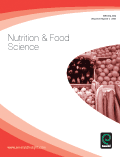
Nutrition & Food Science
Cultivating a deeper understanding of nutrition and food systems.Nutrition & Food Science, published by EMERALD GROUP PUBLISHING LTD, is a prominent journal dedicated to advancing the understanding of nutritional science and food technology. With an ISSN of 0034-6659 and an E-ISSN of 1758-6917, this journal has provided a platform for scholarly articles, reviews, and insightful research since its inception in 1971. The journal is recognized in the Q3 quartile for both Food Science and Nutrition and Dietetics categories, showcasing its moderate impact within the field. Currently ranked #202 in Food Science and #81 in Nutrition and Dietetics based on Scopus metrics, it caters to a diverse audience of researchers, practitioners, and students eager to explore the latest findings and developments. While not an open-access journal, it offers various subscription options for individuals and institutions keen on accessing high-quality research. With a commitment to interdisciplinary collaboration and practical applications, Nutrition & Food Science is an essential resource for those invested in improving health outcomes through informed dietary practices and food innovations.
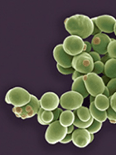
Annual Review of Food Science and Technology
Unveiling Cutting-Edge Insights in Food ResearchThe Annual Review of Food Science and Technology, published by ANNUAL REVIEWS, is an esteemed journal dedicated to advancing the knowledge within the field of food science. With an impressive Q1 ranking in the Food Science category, and ranking as #6 out of 389 in the Scopus Agricultural and Biological Sciences category, the journal serves as a vital resource for researchers, professionals, and students. This publication encapsulates comprehensive reviews and cutting-edge research, helping to bridge the gap between research and practical application. Though it does not offer Open Access, it provides valuable insights into various aspects of food science from 2010 to 2024, ensuring that its readership stays at the forefront of emerging trends and innovations. The journal's focus on high-quality, peer-reviewed articles makes it a critical platform for scholars looking to deepen their understanding and contribute to this rapidly evolving field.
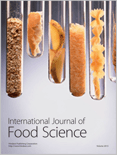
International Journal of Food Science
Championing Excellence in Food Science ScholarshipThe International Journal of Food Science, published by HINDAWI LTD, stands as a crucial platform for advancing knowledge within the realm of food science. Established in 2013, this Open Access journal based in Egypt has garnered significant recognition, achieving an impressive Q2 classification in the 2023 Food Science category, which reflects its commitment to quality and impactful research. With a Scopus rank of #88 out of 389 in Agricultural and Biological Sciences and placing in the 77th percentile, this journal serves as an essential resource for researchers, professionals, and students dedicated to innovative developments and scientific exploration in food science. The journal not only provides unrestricted access to valuable research but also aims to foster collaboration and dissemination of knowledge on critical issues affecting food safety, nutrition, and technology. For those looking to keep abreast of the latest advancements, the International Journal of Food Science is certainly an indispensable addition to their academic pursuits.

Food Hydrocolloids for Health
Transforming Food Science into Health SolutionsFood Hydrocolloids for Health, published by ELSEVIER, stands at the forefront of research in the fields of food science, gastroenterology, nutrition, and pharmaceutical science. With an ISSN of 2667-0259 and an impressive positioning in the academic community, the journal is ranked Q1 in Food Science and Pharmaceutical Science, alongside Q2 rankings in Gastroenterology and Nutrition and Dietetics as of 2023. This journal serves as a critical platform for disseminating innovative findings related to the health benefits of food hydrocolloids, emphasizing their applications and efficacy in nutrition and medicine. Researchers, professionals, and students can access cutting-edge studies that promote the understanding of health outcomes derived from hydrocolloid-based foods. The journal’s international outreach from the Netherlands facilitates a diverse array of contributions, making it essential for those engaged in advancing knowledge within these dynamic disciplines.

Applied Food Research
Advancing Food Science for a Sustainable FutureApplied Food Research, published by Elsevier, is an esteemed journal that plays a critical role in advancing the field of Food Science. With an ISSN of 2772-5022, the journal has established itself as a premier outlet for high-quality research, achieving a commendable Q1 ranking in the 2023 Food Science category and a 63rd percentile in Scopus rankings for Agricultural and Biological Sciences. Covering a diverse range of topics from food safety to innovative processing techniques, Applied Food Research seeks to publish pioneering studies that enhance our understanding of food systems and contribute to broader discussions on sustainability and nutrition. As it converges on its fourth year of publication, researchers, professionals, and students alike are encouraged to engage with its content through various open access options, ensuring widespread dissemination of knowledge in a field that is vital to global health and well-being. Operating out of Amsterdam, Netherlands, this journal is poised to be an indispensable resource for anyone dedicated to making significant contributions in the domain of food science.
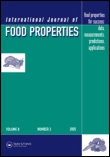
INTERNATIONAL JOURNAL OF FOOD PROPERTIES
Connecting researchers to the future of food science.INTERNATIONAL JOURNAL OF FOOD PROPERTIES, published by TAYLOR & FRANCIS INC, is a leading platform for disseminating high-quality research in the field of food science. With an ISSN of 1094-2912 and E-ISSN of 1532-2386, this journal has been committed to open access since 2018, ensuring that groundbreaking studies are readily available to global audiences. The journal has steadily gained recognition for its contribution to the discipline, achieving a Q2 ranking in Food Science and placing in the 68th percentile among its peers according to Scopus metrics. Covering a wide array of topics related to the properties and applications of food, it serves as a valuable resource for researchers, professionals, and students alike. With coverage extending from 1998 to 2024, the journal continually seeks to advance knowledge and foster innovation within the food science community, making it a pivotal publication for anyone serious about this vital field.

ITALIAN JOURNAL OF FOOD SCIENCE
Elevating Global Knowledge in Food ScienceITALIAN JOURNAL OF FOOD SCIENCE is a distinguished open-access publication dedicated to advancing knowledge in the field of food science, catering to a global audience of researchers, professionals, and students. Published by Codon Publications in Singapore, this journal, operating under the ISSN 1120-1770 and E-ISSN 2239-5687, has been a vital platform for scholarly discourse since its inception in 1996, converging towards a comprehensive view of food science trends through 2024. With an impressive ranking in the third quartile (Q3) of the Food Science category and a Scopus rank of #151 out of 389, the journal plays a significant role in disseminating high-quality research, contributing to a richer understanding of food science within the agricultural and biological sciences. Since transitioning to open access in 2008, it has further expanded its reach, ensuring that innovative research is accessible to all, thereby fostering collaboration and knowledge exchange in this vital industry.
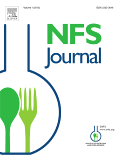
NFS Journal
Unveiling groundbreaking research in Food Science and Nutrition.NFS Journal, published by ELSEVIER, is at the forefront of research in the fields of Food Science and Nutrition and Dietetics, boasting an impressive impact factor that underscores its significance. With an Open Access model since 2015, the journal facilitates widespread dissemination and accessibility of high-quality research, making it a valuable resource for scholars and practitioners alike. Located in Germany, this journal has made its mark with its prestigious Q1 ranking in both Food Science and Nutrition and Dietetics as of 2023, positioning it among the top-tier journals in these disciplines. Additionally, it holds an outstanding standing in Scopus rankings, being placed at 10th out of 140 in Nutrition and Dietetics and at 27th out of 389 in Food Science, reflecting its influence and reach within the global academic community. The NFS Journal is dedicated to publishing the latest advancements and practices that shape our understanding of the relationship between food, health, and nutrition, appealing to researchers, professionals, and students eager to stay updated with novel insights and breakthroughs.

International Food Research Journal
Fostering Excellence in Global Food ResearchThe International Food Research Journal, published by UNIV PUTRA MALAYSIA PRESS, serves as a pivotal platform for disseminating innovative research within the field of food science. With an ISSN of 1985-4668 and an E-ISSN of 2231-7546, the journal has successfully established its presence since its inception in 2007, converging its findings through 2024. This esteemed journal holds a Q3 ranking in Food Science, illustrating its valuable contributions to the field as demonstrated by its Scopus rank of 276 out of 389, placing it in the 29th percentile among its peers in Agricultural and Biological Sciences. Although it operates under a traditional publishing model, its academic integrity and focus on high-quality research ensure that it remains a vital resource for researchers, professionals, and students eager to explore advances in food technology, nutrition, and safety. By encouraging interdisciplinary collaboration and critical dialogue, the International Food Research Journal plays an essential role in shaping the future of food science research.

Journal of Food Science and Technology-Ukraine
Unlocking Knowledge in Food Safety and QualityJournal of Food Science and Technology-Ukraine, published by the Odesa National University of Technology, stands as a pivotal platform dedicated to the dissemination of high-quality research in the field of food science and technology. With its open access policy established in 2014, the journal fosters global knowledge sharing and accessibility, enabling researchers, professionals, and students to access critical findings and advancements in food technology without barriers. The journal's commitment to publishing innovative studies, reviews, and case analyses reinforces its role in addressing contemporary challenges in food safety, preservation, processing, and nutritional quality. With ISSN 2073-8684 and E-ISSN 2409-7004, it serves as a valuable resource for the academic community, supporting the advancement of food science knowledge and its practical applications.